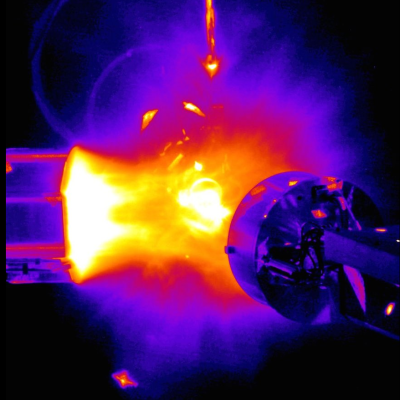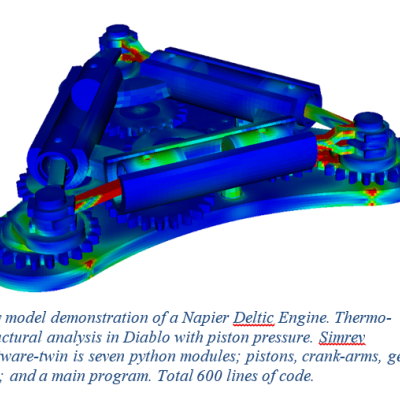LLNL researchers have developed a high average power Faraday rotator that is gas-cooled and uniquely designed to dissipate heat uniformly so that it does not build up in the optical component and affect its performance. The Faraday rotator material is sliced into smaller disks like a loaf of bread so that high speed helium gas can flow between the slices. With this highly efficient cooling…
Keywords
- Show all (46)
- Compact Space Telescopes (5)
- Data Science (5)
- Laser Materials Processing (5)
- Cybersecurity (4)
- Diode Lasers (4)
- Precision Optical Finishing (3)
- RF Photonics (3)
- Computing (2)
- Imaging Systems (2)
- Additively Manufactured (AM) Optics (1)
- Analysis (1)
- Information Technology (1)
- Manufacturing Simulation (1)
- Precision Engineering (1)
- Quantum Science (1)
- Sensors (1)
- Ultrashort Pulse Lasers (1)
- (-) Optical Damage Mitigation (3)
- (-) Simulation (2)

This invention discloses a method to minimize transient variations in the wavelength- and/or pointing-behavior of an optic, without requiring a reduction in its thermal resistance, optical absorption, or operating irradiance. The invention employs a combination of a time-varying heat source and time-varying thermal resistance and/or heat sink temperature to achieve temperature stability of the…

This invention concerns a new type of optic: a transient gas or plasma volume grating produced indirectly by small secondary lasers or directly by nonlinear processes using the primary beams themselves. When used in conjunction with advantageously placed shielding it offers a means of protecting the final optical components of a high-repetition-rate IFE facility. These transmission optics are…


Simrev is a python library imported into a user-generated program. As the program grows in capability and complexity, the engineered product matures. The "software twin" handles all changes to product configuration and is the portal to running supercomputing analysis and managing workflow for engineering simulation codes. Assemblies become program modules; parts, materials, boundary conditions…

